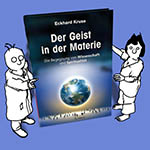Camera-based tracking system for Ouija research
For more than a century, the Ouija phenomenon is subject to discussions about how
the planchette motions and the resulting messages can be explained, with the majority of
scientists considering the ideomotor effect as a sufficient explanation. Research on the Ouija
board is scarce, even though in principle experiments could be done quite easily.
I have developed a technical system and software to gain detailed data about planchette motions and the sitters’ interaction, while at the same time providing spelling support during the Ouija session. It is based on camera-based tracking of the planchette and can be complemented by data collected with a sensor directly on the planchette. The data is analyzed and evaluated in various ways with regards to the planchette motions as well as text production. The system has been used in more than 50 Ouija sessions with two to five sitters; example data is provided to show the potential to gain new insights into the Ouija phenomenon.
A scientific publication of some of the results can be accessed here:

I have developed a technical system and software to gain detailed data about planchette motions and the sitters’ interaction, while at the same time providing spelling support during the Ouija session. It is based on camera-based tracking of the planchette and can be complemented by data collected with a sensor directly on the planchette. The data is analyzed and evaluated in various ways with regards to the planchette motions as well as text production. The system has been used in more than 50 Ouija sessions with two to five sitters; example data is provided to show the potential to gain new insights into the Ouija phenomenon.
A scientific publication of some of the results can be accessed here:
- Eckhard Kruse (2019): Camera-Based Tracking System for Ouija Research. Journal of Scientific Exploration, 33(2). 255-276.



